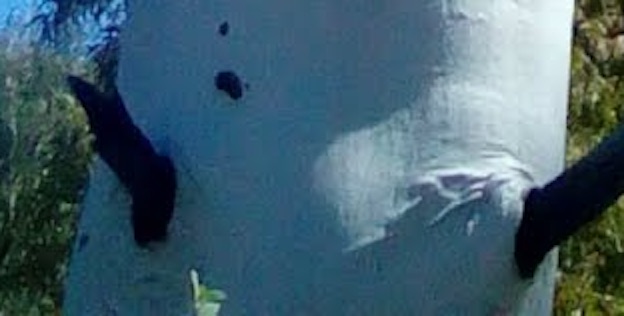This is near Alice Springs NT, Australia, about -24°S latitude, 550m. Area is arid but it's in a maintained park.
I don't know the exact size, but the photo is hand-held from the ground and clearly the tree is quite tall.
I only have this one photo to work with (it's not mine). I've added some cropped sections of the same original image below for easier viewing.
It reminded me of the tree I saw in the linked video below, which is likely a Eucalyptus considering the koala context.
I don't need an exact species, just confirmation of my genus hunch.
Oh! No koalas were seen in the tree eating leaves at the time, which would have made a "differential diagnosis" easer.
From Koala Bears and Eucalyptus - Periodic Table of Videos at about 02:10 (Sir Poliakoff reminds us a few times in the video (himself as well) that koalas are not "bears"!)




